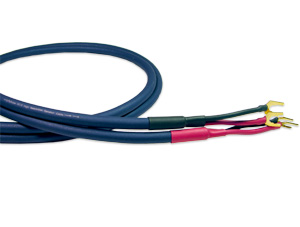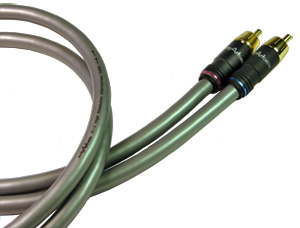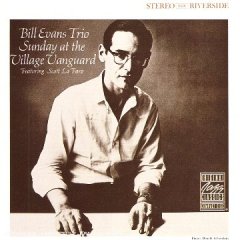Audio Art Cables and Interconnects
| Audio Art Cables and Interconnects |
| An Incredibly Affordable Most Wanted Product |
|
|
|
November 2006 |
 Audio Art– The Man– The Company
Audio Art– The Man– The Company
One brand of cables that has seen off its share of more expensive brands in many a reviewers’ system is DH Labs Silver Sonic. From their innovative Air Matrix interconnects to the redoubtable T-14 speaker cables, since opening up shop in the early 90’s, they have maintained one of the best reps in the high-end for all-out performance at less than all-out prices.
So if you’re a young upstart cable company with an eye toward producing a competitive product at an extra competitive price, to whom do you turn for advice and perhaps even to assist in drumming up the overseas business connections necessary to do so? You turn to guys who do it well; guys like Darren Hovsepian; the ‘DH’ in ‘DH Labs Silver Sonic.’
With regard to how he is able to offer such value for dollar, Mr. Hovsepian has been quoted elsewhere as saying, “We spend as much money as necessary to procure the finest materials available, but we don’t waste money on extravagant packaging and full-page ads in all of the magazines. We do most of our design work in-house, but we also consult with outside firms when we feel it will help…We always try to price our products strictly based on what it costs us to make them, and no higher.” Amen to that.
Audio Art CEO Rob Fritz has told me he has long considered DH Labs Silver Sonic products to be among the benchmarks in the high-end in terms of value-for-dollar performance. And while he does not use quite the self-same geometries, conductor materials or construction methods in his own products, both his business model and sonic values are essentially inspired by and akin to Darren’s. Respect the master– Karate Kid rule number two; right after “Belt is for hold up pants, Daniel-san.” Hai!!!
Audio Art is for now available only in cyberspace. Such virtual-ness provides a way to keep overhead costs to a bare minimum and lends itself well to the ‘buy it and try it’ home demo ethos that is fast replacing the in-store demo model in the high-end (witness the rise of Aperion Audio, AV123 etc.).
I dunno about things in your neck of the woods, but with exactly one solitary bona fide two-channel high-end stereo store left in the Nashville area (Nicholson’s HiFi—big shout out to y’all!!), I can certainly appreciate the diverse array of products and relatively low mark-up such cyber stores afford their patrons.
Synergizing your System—The real Grail quest
Had I not had roughly three and one third gaggles or so of wires lying around for review and/or ’personal evaluation’ purposes (heh heh heh!), some costing approximately the Gross National Product of The Republic of Uganda, I might simply have pronounced the silver-coated copper SC-5 speaker cables “excellent and balanced,” tousled their hair, and gotten back to reviewing cool stuff with expensive laser-etched faceplates and pretty blue lights.
But no– instead of a spot of tea and a golf clap, since cables from the likes of Stereovox, JPS Labs and Revelation Audio Labs were simultaneously in house, the poor unsuspecting Audio Arts had to suffer the torture of a head-to-head with some of the big boys of the cable world. Bad luck indeed. Or was it?
Before I answer that, please bear in mind my conviction that since we can never be certain of precisely what the original sound of any of our recordings actually was, it seems rather pointless to speak either of which cable is most nearly ‘neutral’ or best captures it.
Throw in the myriad sonic colorations and omissions attendant to the components comprising our systems, and descriptors such as ‘neutral’ and ‘true to source’ then almost cease to mean anything.
With apologies therefore to a certain famous magazine that shall remain Absolutely nameless, I shall endeavor to use words and phrases like ‘preferred’ and ‘worked better in my system’ in lieu of the more common ‘better,’ ‘more neutral,’ and the ever-popular “twinkling molecules of sound” (thanks be to Stereophile’s Jonathan Scull or ‘J-10’ for that last one). [End philosophical missive.]
Bring Da Noize—Bring Da Funk
As I say, it is relative qualities and not absolute ones that count in both reviewing and enjoying, and I found the silver over copper (get it? SC= Silver Coated) SC-5’s to be so all around musical, versatile and easy to use (read: flexible), that it was only by way ofcomparison with some much pricier cable fare, that they ultimately revealed themselves to be slightly less preferential (whew—caught myself!!) in my system. Let me speak in generalities first and proceed then to highlight a few specifics.
In comparison with the most excellent JPS Labs Superconductor + Petite speaker cables (my 600 dollar a pair reference cables), I felt the Audio Art SC-5 speaker cables exhibited a slight bit of extra treble energy, (particularly evident with massed violins), a touch more fine grain, a very slightly smaller soundstage and perhaps a smidge less palpability and instrumental separation.
 For instance, via my reference system with the JPS Labs speaker cables doing the honors, Alison Krauss’s vocals on ‘Ghost in this House’ from her Live CD [Rounder 11661-0515-2] are spookily present—ghost-like you might say! The soundstage is huge and her voice is grain-less and breathy. Via the Audio Arts, there was perhaps a touch more grain and synthetic-ness about things—though only a bit. If you’re fond of ‘as ifs’—it was as if the microphone she was singing into was traded in for the same model without the latest condenser updates—the ‘mark 1’ instead of the ‘mark 2SE,’ shall we say. Same sound—just a mite less ethereal and human.
For instance, via my reference system with the JPS Labs speaker cables doing the honors, Alison Krauss’s vocals on ‘Ghost in this House’ from her Live CD [Rounder 11661-0515-2] are spookily present—ghost-like you might say! The soundstage is huge and her voice is grain-less and breathy. Via the Audio Arts, there was perhaps a touch more grain and synthetic-ness about things—though only a bit. If you’re fond of ‘as ifs’—it was as if the microphone she was singing into was traded in for the same model without the latest condenser updates—the ‘mark 1’ instead of the ‘mark 2SE,’ shall we say. Same sound—just a mite less ethereal and human.
On bass heavy songs such as “Forget about it,” from the same CD, the Audio Arts had as much low-end energy as the reference cables and were about as dynamically capable but there was a bit more definition down there via the JPS’s.
Details too were mildly more evident via the Reference cable, such as the sliding of fingers on nylon strings during some of the demonically fast licks on Eliot Fisk’s solo guitar CD ‘Latin American Guitar,’ [MusicMasters 67127-2], as were the subtle interpolated harmonics those fingers produce on some of the very well-recorded tracks throughout this CD. Un-musical (to me anyway) sounds like the incessant humming of Glenn Gould and the creaking of his bench on, well… damn near all of his recordings were also more apparent with the JPS Labs.
As compared with the beluga-caviar Revelation Audio Labs speaker cables; pure silver and attired in Isaac-Mizrahi-approved couture lavender (review pending), the Audio Arts had a touch more grain and their soundstage was not quite as cavernous. Nor did they have as much perceived bass extension.
Of course, the Rev’s went to college and majored in both cavernousness and grainlessness, but in the wrong system for them, they can sound too laid back for my taste. The Audio Arts by comparison are more up front. For instance, on Willie Nelson’s depressing though beautifully recorded and performed ‘Spirit’ [Island 524242], Willie’s vocals are more front and center with the Audio Arts, whereas they are slightly aft, smoother, richer and inhabit more ambient space with the Revs.
This is not a shootout though and there is no champion to be crowned, but if pressed, I’d say both the JPS Labs cables and the Revelations do the things they do well to a greater degree (like clarity, punch and palpability for the JPS and space, warmth, bass and grainlessness for the Revelations) than the Audio Art SC-5’s.
On the other hand, the Audio Art SC-5’s sounded balanced enough all-around that I never found myself pointing to any one characteristic and saying, “Wow—listen to that!” For some, that’s what a cable is supposed to do at any price.
Therefore, despite its much lower price, I would feel more confident recommending the SC-5 as the ‘go to’ cable in a wider variety of systems than the Revelations, and maybe even the JPS Labs, especially because the latter, more so than the Audio Arts, will show you more precisely what your other stuff is doing—not necessarily a good thing if you don’t have exactly the sound you want in terms of your ‘other stuff!’
To wit, they’d be my preference in fact (and have been) over many pricier cables I’ve heard in the past, and as an added bonus their price allows me to recommend them to friends—some of whom have noticed my poverty and inquired as to how they too can spend huge sums of money on stuff few people care about– like speaker wire.
As an interesting price-appropriate counterpoint, what of the Lowe’s (or Home Depot) 6-gauge speaker cable Marty DeWulf of Bound For Sound likes so much? That’s much closer in price to the SC-5’s and fortunately I happen to have a shoddily self-made pair on hand.
Shoddy workmanship aside, I have used these for a time in the configuration Marty has suggested, and have found the Audio Arts to be less grainy, more balanced and more nuanced, if lacking in the sheer dynamic punch and slam bang bass of the former. Maybe this means there’s no way to get around cheap non-audiophile approved copper no matter how many twists you put in it or what connectors you choose. But boy those Lowe’s cables can slam—DMX fans take note and go directly to Lowe’s!
We’re all inter-connected
Kevin Federline isn’t just Britney Spears’ now-ex-husband and the father of their driving baby—he’s a singer too. And Audio Art doesn’t just make the budget breakout SC-5 speaker cables—they make interconnects too, and pretty good ones at that.
 Currently, Audio Art has two models on offer; the IC-1 And the IC-3. Both are quite flexible and thus easy to wrangle, both are shielded, and both are plain in appearance as a Midwest soccer mom post-game on a Sunday (A reviewer mustexperiment with similes if he is ever to break new ground).
Currently, Audio Art has two models on offer; the IC-1 And the IC-3. Both are quite flexible and thus easy to wrangle, both are shielded, and both are plain in appearance as a Midwest soccer mom post-game on a Sunday (A reviewer mustexperiment with similes if he is ever to break new ground).
Like the SC-5 speaker cables, big brother IC-3 gets to have its copper conductors dipped in silver, (a sonically controversial practice in some parts), though doesn’t depart from the fairly tried and true straight-forward cable geometry and materials Audio Art employs across the line. In fact, both the IC-3 and the IC-1 are identical in terms of their geometry, differing only in terms of this business of silver coating; a practice which presumably accounts for the price jump. Otherwise, no magic complex number ratios or spider web dialectrics are to be found; just solid EE 101 engineering.
Before continuing, I would like to mention that as with many cables, you MUST break them in prior to doing any serious reviewing of your own. In fact, Rob Fritz believes so strongly in cable break-in, he offers it as a value-added feature for only five extra smackers. You might want to take him up on that.
I did not, and consequently found that just out of the box, the IC-1 was – merely alright. It remained merely alright for approximately 30-40 hrs of play, at which time it obtained its full ‘nice-ness’. The IC-3 on the other hand, was all but unlistenable for the first ten or so hours– whiter and brighter than Tom Cruise’s smile at the groundbreaking ceremony for a Scientology center. This was especially apparent while using it with the slightly cool Consonance Ref 2.2 Linear CD player in my headphone system. My Lector player is somewhat warmer and made the break-in period more nearly tolerable.
Incidentally, the SC-5 speaker cable seemed to need only 10 or 20 hours of play to become itself. In any case, after you guys (and you know who you are) run out and on-line purchase some Audio Art IC’s, DO NOT upon their arrival, rip the box open, lash them into the Big Rig and then run shrieking to your Mac-book to peck out a letter to the editor entitled “Abramson Is Deaf.” You have been warned!
In order to get ‘up close and personal’ with the Audio Art dynamic duo, I primarily listened to them via my headphone system, which consisted of either my Lector CDP 0.6T CD player or the Consonance CD 2.2 Linear CD player (review pending), going into an adorable iCute Beyond (definitely better than the original iCute) head amp, which in turn powers my Sennheiser HD 600’s.
First up was the ‘budget model,’ the all copper IC-1. I listened to Anne Sophie Mutter, Andre Previn and Daniel Muller-Schott playingMozart’s piano trios on the CD of the same name [DG 477 611-4]. As compared with my long-time fave IC’s the Stereovox HDSE, the budget model Audio Art IC’s sounded—nice. They were less focused, less detailed and had less space and less air. But again, no one part of the frequency spectrum seemed unduly emphasized. Balanced and pleasant; and this is how they continued to sound with CD after CD.
By way of corroboration, a friend of mine who has a nice system consisting of a pair of Gallo Ref 3.1’s and an NAD integrated, agreed with me. I loaned them to him for a time, and he proclaimed them, “nice- a really even sounding cable- definitely an improvement over what I’m using (other budget IC’s).” You see? Told you they were nice.
 As mentioned above, the silvered IC-3 is pricier and fortunately, along with the price jump comes a commensurate jump in performance. I found myself saying hello to more shimmer and sparkle up top, as well as to more bass depth and overall definition. In the wonderful recording of Papa Haydn’s The Seasons [HMC 901829.30], I could better discern choral counterpart, and tympanic thunder sounded more like individual drums than thunder. The same was true of Scott LaFaro‘s bass while plumbing the funkadelic depths in 1961 on Sunday At the Village Vanguard [Fantasy OJCCD 140-2] with Bill Evans at the helm.
As mentioned above, the silvered IC-3 is pricier and fortunately, along with the price jump comes a commensurate jump in performance. I found myself saying hello to more shimmer and sparkle up top, as well as to more bass depth and overall definition. In the wonderful recording of Papa Haydn’s The Seasons [HMC 901829.30], I could better discern choral counterpart, and tympanic thunder sounded more like individual drums than thunder. The same was true of Scott LaFaro‘s bass while plumbing the funkadelic depths in 1961 on Sunday At the Village Vanguard [Fantasy OJCCD 140-2] with Bill Evans at the helm.
There was more detail to be had across the frequency spectrum with any ol’ recording I threw at IC-3’s and, while I still preferred my fave Stereovox IC’s (along with a pair of JPS Labs Superconductor FX’s I had in-house), for their more even-handed, un-hyped continuousness up and down the scale, a case could certainly be made in the right system (perhaps one in need of a bit more detail and high end shimmer) for the IC-3.
Conclusion and the bidding of peace
So there you have it—my first cable review. I was gentle and spared you a running commentary of exactly how every instrument and voice on every one of my CD’s sounded with the Audio Arts in my system.
Instead, I tried to give you the comparative gestalt of things in a way that might be meaningful for you as you go about comparing and contrasting, which Audio Art’s 30-day, no-questions-asked satisfaction guarantee makes easy to do.
In a nutshell? The IC-1 is… nice. They are the most balanced cable I’ve heard for this little yen and their sins are more of the omissionvariety than commission. The IC-3 is nicer still (more preferential) in my system; its silver coating yielding gains in detail, bass and instrumental texture.
However, even after break-in some care may need to be taken in system synergizing, as that pleasing bit of shimmer it has up top might verge on ‘coolness’ (opposite of ‘warmness’) with the wrong components. Nonetheless, it showed itself to be a detailed, dynamic, admirable performer. And the SC-5 speaker cable? Well I’d go so far as to call these ‘sweet.’ Not in the sonic sense, but rather in the iPod-fueled, Myspace-cruisin’ kiddie vernacular. You know–‘sweeeeeet!’ As in pretty much you can’t go wrong with ‘em. Over time, they’ve interacted with on the order of 20 different components in my system, including different IC’s, amps, preamps etc., and have never been less than I know them to be—musical, flexible and generally satisfying.
That’s why I named them to my Most Wanted Components of 2006list and why I continue to use them interchangeably with some of the more ‘haut couture’ wires now hobnobbing about in my ‘extended loan’ collection.
Perhaps best of all is the fact that you can audition all the Audio Arts in the privacy of your own palatial estate with a clickety-click or two of the left mouse button. Don’t like them? Send ‘em back—boss Rob Fritz will understand. But if you prefer what I prefer, and cant or refuse on principle to spring for lots of platinum Tiffany connectors and Mizrahi-designed cable jackets, you just may have found your company.
And with that, as promised, I bid you peace. Nowadays in the world we most especially need it.
David Abramson
________________
Audio Art Cables
Price: IC-3 – $99.95 US per meter pair; SC-5 – $115 per eight-foot pair.
Audio Art Cable
4665 Altadena Avenue
San Diego, CA 92115
Phone: (619) 255-6451
Website: www.audioartcable.com
Contact: rfenterprises@cox.net
![]()
Don’t forget to bookmark us! (CTRL-SHFT-D)
Stereo Times Masthead
Publisher/Founder
Clement Perry
Editor
Dave Thomas
Senior Editors
Frank Alles, Mike Girardi, Key Kim, Russell Lichter, Terry London, Moreno Mitchell, Paul Szabady, Bill Wells, Mike Wright, Stephen Yan, and Rob Dockery
Current Contributors
David Abramson, Tim Barrall, Dave Allison, Ron Cook, Lewis Dardick, Dan Secula, Don Shaulis, Greg Simmons, Eric Teh, Greg Voth, Richard Willie, Ed Van Winkle, and Rob Dockery
Music Reviewers:
Carlos Sanchez, John Jonczyk, John Sprung and Russell Lichter
Site Management Clement Perry
Ad Designer: Martin Perry





Be the first to comment on: Audio Art Cables and Interconnects